U.S. Treasury Market Action on Election Night 2016

As the midterm elections approach, it’s worth revisiting the striking financial market response to the last federal elections, in 2016. U.S. equity market futures and Treasury yields first plunged on election night 2016, as the presidential election results turned out closer than expected, but quickly rebounded after President Trump’s victory became clear, ultimately ending the day higher. In this post, I take a close look at the unusual U.S. Treasury market behavior that night, focusing on the market conditions and trading flows amid which the sharp yield changes took place.
The New York Fed DSGE Model Forecast—October 2018
This post presents an update of the economic forecasts generated by the Federal Reserve Bank of New York’s dynamic stochastic general equilibrium (DSGE) model. We describe very briefly our forecast and its change since July 2018. As usual, we wish to remind our readers that the DSGE model forecast is not an official New York Fed forecast, but only an input to the Research staff’s overall forecasting process. For more information about the model and variables discussed here, see our DSGE model Q & A.
Tax Reform and U.S. Effective Profit Taxes: From Low to Lower

The Tax Cut and Jobs Act (TCJA) reduced the federal corporate profit tax rate from 35 percent to 21 percent. Adding in state profit taxes, the overall U.S. tax rate went from 39 percent, one of the highest rates in the world, to 26 percent, about the average rate abroad. The implications of the new law for U.S. competitiveness depend on how these statutory tax rates compare with the actual rates faced by U.S. and foreign companies. To address this question, this post presents new evidence on tax payments as a share of profits, as well as analytical measures of tax impacts on profitability. We find that the U.S. effective tax rate was already below the average rate abroad prior to the enactment of the TCJA, and that it is now well below the rate in most countries.
Bank‑Intermediated Arbitrage
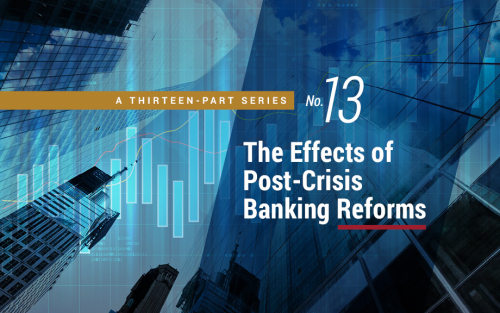
Since the 2007-09 financial crisis, the prices of closely related assets have shown persistent deviations—so-called basis spreads. Because such disparities create apparent profit opportunities, the question arises of why they are not arbitraged away. In a recent Staff Report, we argue that post-crisis changes to regulation and market structure have increased the costs to banks of participating in spread-narrowing trades, creating limits to a¬rbitrage. In addition, although one might expect hedge funds to act as arbitrageurs, we find evidence that post-crisis regulation affects not only the targeted banks but also spills over to less regulated firms that rely on bank intermediation for their arbitrage strategies.
Credit Market Choice

Credit default swaps (CDS) are frequently credited with being the cause of AIG’s collapse during the financial crisis. A Reuters article from September 2008, for example, notes “[w]hen you hear that the collapse of AIG […] might lead to a systemic collapse of the global financial system, the feared culprit is, largely, that once-obscure […] instrument known as a credit default swap.” Yet, despite the prominent role that CDS played during the financial crisis, little is known about how individual financial institutions utilize CDS contracts on individual companies. In a recent New York Fed staff report, we assess the choice banks face when trading the idiosyncratic credit risk of a firm, and argue that banks’ participation decisions have been affected in the post-regulation period, either by direct changes in market structure or by changes in the relative cost of pursuing different strategies.
Liquidity Effects of Post‑Crisis Regulatory Reform
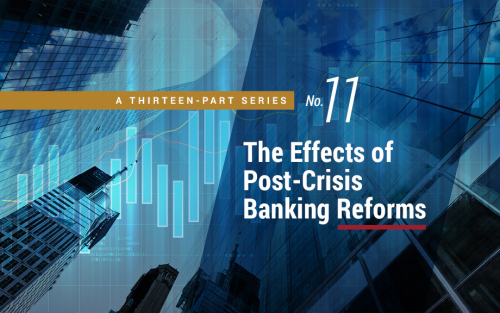
The post-crisis regulatory reform efforts to improve capital and liquidity positions of regulated institutions provide incentives for banks to change not only the structure of their own balance sheets but also how they interact with their customers and other market participants more generally. A 2015 PwC study on global financial market liquidity, for example, noted that “[a]s banks respond to the new regulatory environment, they have sought to make more efficient use of capital and liquidity resources, by reducing the markets they serve and streamlining their operations.” In this blog post, we provide an overview of three recent New York Fed staff reports that study the impact that post-crisis regulation has had on the willingness and ability of regulated firms to participate in U.S. over-the-counter (OTC) markets.
Did Banks Subject to LCR Reduce Liquidity Creation?
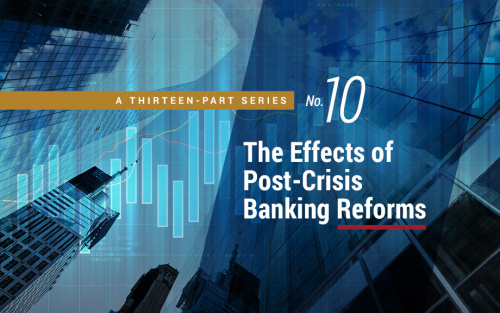
Banks traditionally provide loans that are funded mostly by deposits and thereby create liquidity, which benefits the economy. However, since the loans are typically long-term and illiquid, whereas the deposits are short-term and liquid, this creation of liquidity entails risk for the bank because of the possibility that depositors may “run” (that is, withdraw their deposits on short notice). To mitigate this risk, regulators implemented the liquidity coverage ratio (LCR) following the financial crisis of 2007-08, mandating banks to hold a buffer of liquid assets. A side effect of the regulation, however, is a reduction in liquidity creation by banks subject to LCR, as we find in our recent paper.
Leverage Rule Arbitrage

Classic arbitrage involves the same asset selling at different prices; the leverage rule arbitrage we study here involves assets of different risk levels requiring the same amount of capital. The supplementary leverage ratio (SLR) rule, finalized by U.S. regulators in September 2014, requires a minimum ratio of capital to assets at the largest U.S. banks. The floor is higher for more systemically important banks, but not for banks with riskier assets. That non-risk-based aspect of SLR was intentional, since the leverage limit was meant to backstop (“supplement”) risk-based capital rules in case banks underestimate their asset risk and overstate their capital strength. As policymakers have noted and bankers have warned, if the leverage rule is the binding capital requirement, banks can “arbitrage” the rule by selling safer assets and replacing them with riskier, higher-yielding ones. The findings of our recent staff report are consistent with those concerns.
What Happens When Regulatory Capital Is Marked to Market?
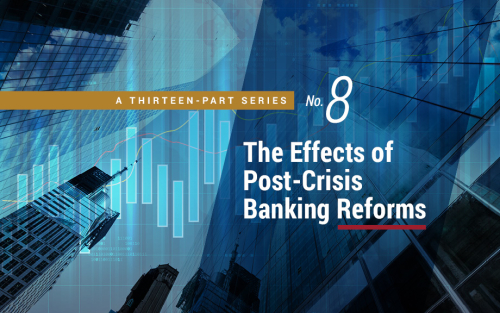
Minimum equity capital requirements are a key part of bank regulation. But there is little agreement about the right way to measure regulatory capital. One of the key debates is the extent to which capital ratios should be based on current market values rather than historical “accrual” values of assets and liabilities. In a new research paper, we investigate the effects of a recent regulatory change that ties regulatory capital directly to the market value of the securities portfolio for some banks.
Why Do Banks Target ROE?
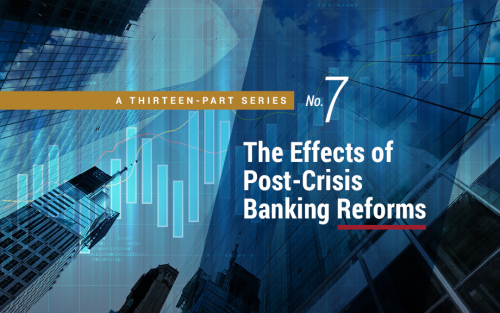
Nonfinancial corporations focus on the growth in earnings per share (EPS) to benchmark their performance. Banks used to follow a similar practice, but starting in the late 1970s they began to emphasize return on equity (ROE) instead. In this blog post, we outline findings from our recent staff report, which argues that banks had an incentive to make this change when their charter values eroded owing to increased competition, and the incentive to change was magnified by risk-insensitive deposit insurance.










 RSS Feed
RSS Feed Follow Liberty Street Economics
Follow Liberty Street Economics